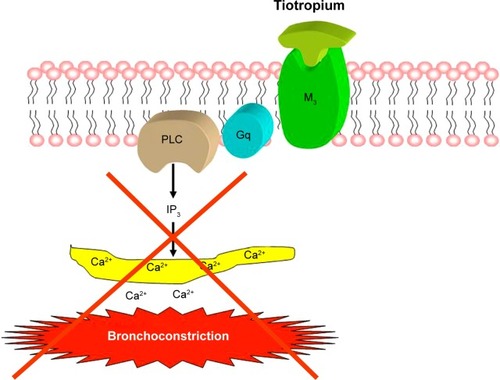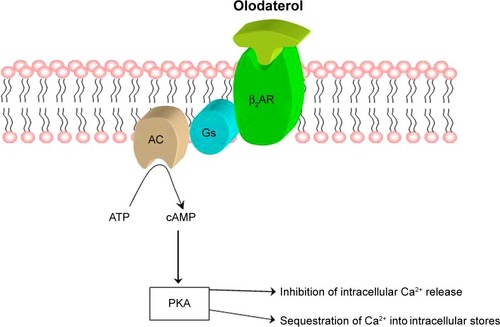Figures & data
Figure 1 Tiotropium: mechanism of bronchodilating action.
Notes: Tiotropium lastingly binds with high affinity to muscarinic M3 receptors, thus preventing them from activating the signal transduction pathway involving Gq protein and phospholipase C (PLC). As a consequence, the synthesis of the intracellular second messenger inositol 1,4,5-trisphosphate (IP3) is suppressed. Therefore, blockade of muscarinic M3 receptors by tiotropium results in an effective inhibition of bronchoconstriction mediated by IP3-dependent Ca2+ mobilization.

Figure 2 Olodaterol: mechanism of bronchodilating action.
Notes: Olodaterol persistently binds with high affinity and selectivity to β2-adrenergic receptor (β2-AR), thus forming a very stable ternary complex, also including G stimulatory (Gs) protein. The subsequent, long-lasting stimulation of adenylyl cyclase (AC) and sustained increase in the intracellular concentration of second messenger cyclic AMP (cAMP) are responsible for activation of cAMP-dependent protein kinase A (PKA). PKA phosphorylates several targets involved in inhibition of Ca2+ release, as well as in sequestration of Ca2+ into intracellular stores.

Table 1 LABA/LAMA fixed dose combinations
